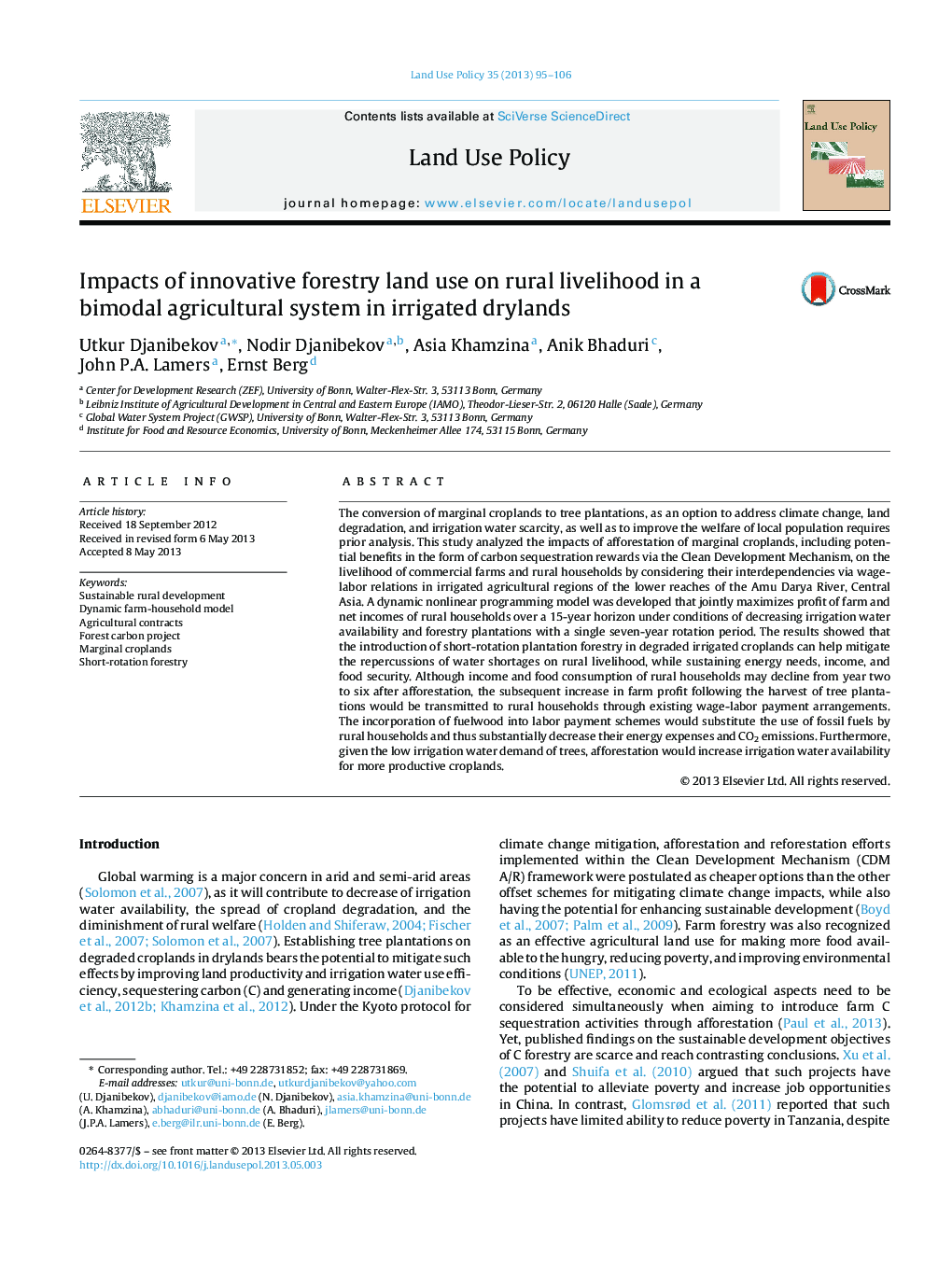| کد مقاله | کد نشریه | سال انتشار | مقاله انگلیسی | نسخه تمام متن |
|---|---|---|---|---|
| 93168 | 160116 | 2013 | 12 صفحه PDF | دانلود رایگان |
• Introducing tree plantations on marginal croplands improves rural livelihood.
• Multi-purpose tree products have a potential to improve agricultural payments.
• Livelihood improvement comes from diversified agricultural contracts.
The conversion of marginal croplands to tree plantations, as an option to address climate change, land degradation, and irrigation water scarcity, as well as to improve the welfare of local population requires prior analysis. This study analyzed the impacts of afforestation of marginal croplands, including potential benefits in the form of carbon sequestration rewards via the Clean Development Mechanism, on the livelihood of commercial farms and rural households by considering their interdependencies via wage-labor relations in irrigated agricultural regions of the lower reaches of the Amu Darya River, Central Asia. A dynamic nonlinear programming model was developed that jointly maximizes profit of farm and net incomes of rural households over a 15-year horizon under conditions of decreasing irrigation water availability and forestry plantations with a single seven-year rotation period. The results showed that the introduction of short-rotation plantation forestry in degraded irrigated croplands can help mitigate the repercussions of water shortages on rural livelihood, while sustaining energy needs, income, and food security. Although income and food consumption of rural households may decline from year two to six after afforestation, the subsequent increase in farm profit following the harvest of tree plantations would be transmitted to rural households through existing wage-labor payment arrangements. The incorporation of fuelwood into labor payment schemes would substitute the use of fossil fuels by rural households and thus substantially decrease their energy expenses and CO2 emissions. Furthermore, given the low irrigation water demand of trees, afforestation would increase irrigation water availability for more productive croplands.
Journal: Land Use Policy - Volume 35, November 2013, Pages 95–106
